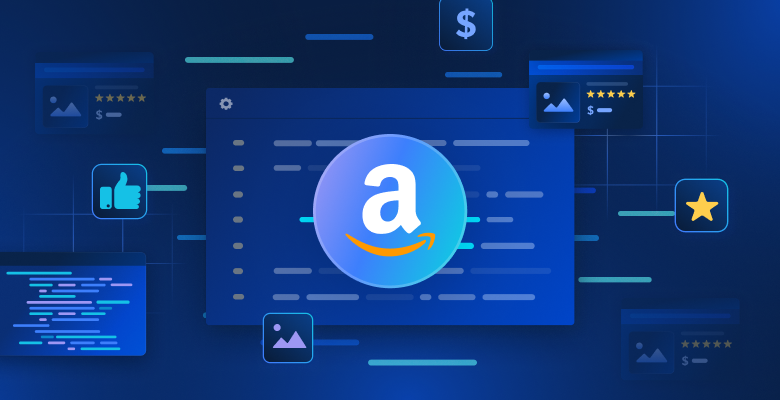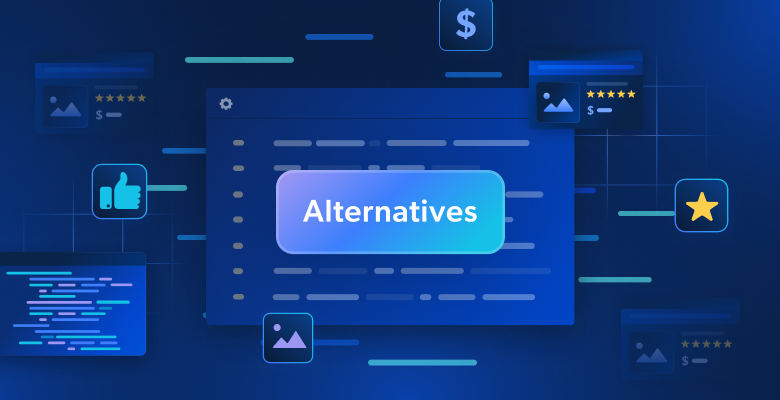In this article, you will learn:
- What Google Ads competitor analysis is
- How it works
- The best tools available on the market to perform it effectively
Let’s dive in!
What Is Competitor Google Ads Analysis?
Competitor Google Ads analysis is the process of studying your competitors’ Google Ads strategies to gain insights into their approach to paid advertising. This involves examining search engine results pages to determine which keywords competitors are targeting, how much they might be spending, the copy of their ads, and more.
The ultimate goal is to understand how well your competitors’ ads are performing, so you can refine your own strategy to stay competitive.
Google Ads Competitor Analysis Tools and Approaches
As you might expect, there are several ways to track your competitors’ Google Ads campaigns. Some methods involve manual searches, while others require paid tools or automated solutions.
The most popular approaches to competitor Google Ads analysis include:
- Official Google Tools
- Third-Party Google Ads Competitor Analysis Tools
- Manual Ads Check in SERPs
- Custom Google Ads Tracking Tool Development
- Bright Data Google Ads API
Note: These approaches are not mutually exclusive. For a comprehensive view, an effective competitor analysis Google Ads process typically combines multiple tools and strategies.
Time to explore each of these approaches in more detail!
Official Google Tools
Google does not provide direct ways to see how your competitors are spending on specific keywords. However, you can gain a useful overview of both your own and your competitors’ ad performance through Google Ads and Google Merchant Center.
Leveraging both solutions helps you gather valuable insights into your competitors’ strategies. Understand how these tools work and see the features they offer for Google Ads competitor analysis.
Google Ads
Google Ads, formerly known as Google AdWords, is a powerful online advertising platform. Its purpose is to give businesses the ability to reach their target audiences through search engine results, display ads, and video ads.

While its primary role is to help companies drive traffic and sales, Google Ads can also serve as a valuable tool for competitor analysis. Here are some key features offered by Google Ads that can help you study your competitors.
- Keyword Planner: Get insights into keyword performance to discover new keyword opportunities and assess competition levels. Enter a competitor’s URL or specific keywords to receive a list of suggested keywords, along with metrics such as average monthly searches, competition levels, and suggested bids. Keywords with high searches indicate opportunities to reach a larger audience, while competition levels represent how many advertisers are bidding on a particular keyword. Then, suggested bids give you an estimate of how much you should bid to compete effectively.
- Campaign Target ROAS Simulator: ROAS stands for Return on Ad Spend, so this tool helps you understand how different budget adjustments can impact your ad performance. It analyzes your current campaign spending, considers competitor activity, and estimates potential growth if you adjust your budget. By entering a desired ROAS goal, the simulator provides estimates for metrics like required daily budgets, predicted clicks, and conversion value. That supports your decision-making and helps you understand what your competitors might be spending.
- Bid Simulator: Understand the impact of changing your bid amounts. Input different bid adjustments for specific keywords and simulate how those changes could impact your campaign’s performance. This tool uses historical data to provide insights on metrics like clicks, impressions, average position, and costs. By experimenting with different bid amounts, you can find the optimal balance between maximizing ad visibility and maintaining cost efficiency. This helps you stay competitive without overspending.
- Other Google Ads auction-time bidding simulators: Google Ads comes with several other useful simulators, including Target CPA Simulator, Maximize Conversions Simulator, Maximize Conversion Value Simulator, Maximize Clicks Simulator, and Target Impression Share Simulator.
Google Merchant Center

Google Merchant Center enables businesses to upload product data and manage their listings for Google Shopping ads. Beyond managing product feeds, it also delivers insights into competitor activities, making it a viable tool for competitor Google Ads analysis.
Here are some key features that can help you analyze your competitors:
- Price competitiveness: See how your product prices compare to those of other merchants. It provides a breakdown of whether your products are priced above, in line with, or below industry averages. This comparison helps you understand how your pricing strategy aligns with the market and where you might need to adjust your ads to remain competitive.
- Best sellers: View the top-performing products in your industry based on Google Shopping data. It tells you which products are trending among competitors, helping you adjust your own product listings and advertising strategies accordingly. The goal is to use this data to align your ad campaigns strategically to outsmart your competitors.
Bright Data’s Google SERP API

Bright Data offers a dedicated Google SERP API to retrieve structured data from Google search pages. This API can be easily integrated into scripts written in any programming language, making it the go-to solution for ad intelligence.
Key features of Bright Data’s Google SERP API include:
- 99.9% success rate
- Support for all Google languages
- Free geo-location targeting in 195 countries
- Pagination support for multi-page results
- Device simulation (smartphone, tablet, desktop)
- Integration with a proxy network of 150 million IPs
- Automated anti-bot bypass, including CAPTCHAs
- Unlimited concurrency for large-scale data retrieval
When it comes to Google Ads competitor analysis, this product helps you check which PPC ads appear for your chosen keywords and scrape detailed data on ads for market research. Try Bright Data’s SERP API for free today!
Third-Party Google Ads Competitor Analysis Tools
Outside of Google’s official services, there are many third-party solutions for Google Ads competitor analysis. Let’s explore the most popular ones!
SEMrush

SEMrush is a digital marketing tool widely used for competitor analysis in both organic and paid search. Its Domain Analytics and Advertising Research tools allow marketers to dive deep into their competitors’ Google Ads strategies. By entering a competitor’s domain, you can uncover essential insights, including top-performing keywords, ad copy, ad positions, and traffic estimates.
The Keyword Magic tool provides data on keywords that competitors must be targeting, including their search volume, difficulty, CPC (Cost-Per-Click), and competition level. This helps you understand which keywords are worth bidding on in your own campaigns and figure out why competitors are targeting specific keywords.
SEMrush also offers features to rate how effectively competitors are engaging their audience. That is possible through tools to examine competitors’ ad copy and messaging, USPs (Unique Selling Propositions), and their CTAs (Calls To Actions).
Ahrefs

Ahrefs is well-known for its SEO capabilities, but it also comes with powerful tools for analyzing competitors in paid search. That use case is supported through its Site Explorer feature, where you can input competitor domains to evaluate their paid search efforts. In detail, you can gain insights into PPC (Pay-Per-Click) keywords they rank for, their top-performing ads, and which pages drive the most paid traffic.
On top of that, the Paid Keywords dashboard includes information like keyword volume, cost-per-click, traffic estimates, and more. Ahrefs also allows you to compare your domain against your competitors to identify potential gaps in your strategy and opportunities for improvement.
Moreover, the platform provides backlink analysis to indirectly support your Google Ads efforts by revealing competitors’ link-building strategies.
SpyFu

SpyFu positions itself as a specialized tool for “spying” on competitors’ Google Ads activities. Its PPC Research tool leverages data from Google SERPs and Google Ads Planner to provide a detailed view of competitors’ ad spending, overlapping keywords, and historical performance.
With SpyFu, you can view a competitor’s top-performing keywords and assess their ad spend to gauge which campaigns yield the highest return on investment. The Ads History feature offers a glimpse into competitors’ most profitable ad assets from previous years, giving you the ability to learn from their successes and mistakes.
Manual Ads Check in SERP
The simplest approach to Google Ads competitor analysis is to monitor competitors through manual searches. The idea is to search for keywords related to your business and observe the ads that appear at the top and bottom of the SERP (Search Engine Results Page). This straightforward method helps identify which competitors are actively bidding on those terms.
Keep in mind that the ads displayed may be influenced by your previous searches or preferences. To avoid personalized results and improve accuracy, use a private browser window.
Take time to analyze the ad copy, including headlines and descriptions, to understand competitors’ messaging strategies. Look for patterns in ad frequency and changes in messaging over time, as these can provide valuable insights into their advertising tactics.
The main drawback of this approach is that it requires constant manual monitoring, which is not feasible. Additionally, some ads may only appear during specific times, making it difficult to capture a complete view.
Custom Google Ads Tracking Tool Building
Manual checking is the most effective way to gather real insights into your competitors’ ad strategies. Still, it has several limitations—as we highlighted before. To overcome them all, you can automate the process using a scraping bot.
Such an automated script performs the searches for you and use web scraping to extract key data from the displayed ads. This will save you time and guarantee more consistent results. For detailed instructions, refer to our tutorial on how to scrape SERP with Python.
Unfortunately, this approach comes with some challenges. Google employs advanced anti-scraping measures to protect its search pages. These can easily detect and block scraping scripts, potentially leading to IP bans. Plus, ads vary based on geographical location. So, you might need access to a pool of IP addresses from different countries to monitor region-specific ads.
A more effective alternative is to use a dedicated scraping API designed to retrieve data from Google SERP pages—including ads. Learn more about it below!
Conclusion
In this guide, you explored Google Ads competitor analysis, understanding what it entails and how it works. As discussed, Google does not directly provide tools for studying and identifying competitors in Google Ads. Still, you can gain insights through Google services, third-party tools, or by performing manual or automated searches to gather data on displayed ads.
Regardless of the approach you choose, remember that an effective strategy often involves using multiple tools. The key is that the more data you have, the better your analysis will be. This is where Bright Data’s Google SERP Scraping API becomes invaluable, providing real-time data from Google SERP pages—including ads.
The Google SERP API leverages Bright Data’s advanced proxy services and anti-bot bypass solutions, allowing you to access data from Google search pages effortlessly. Retrieve your SERP ads data in JSON or HTML with a simple API call!
Sign up to find out which of Bright Data’s solutions best suits your needs.






